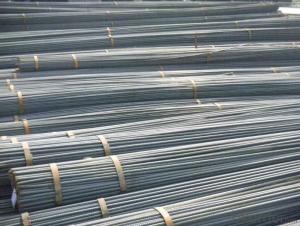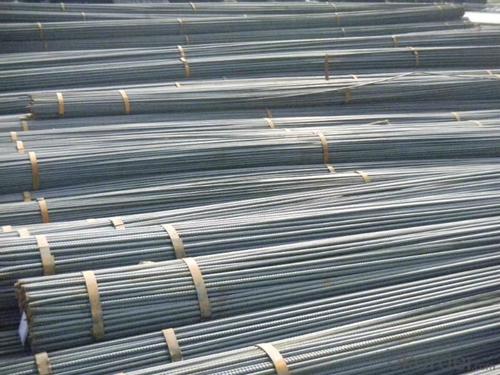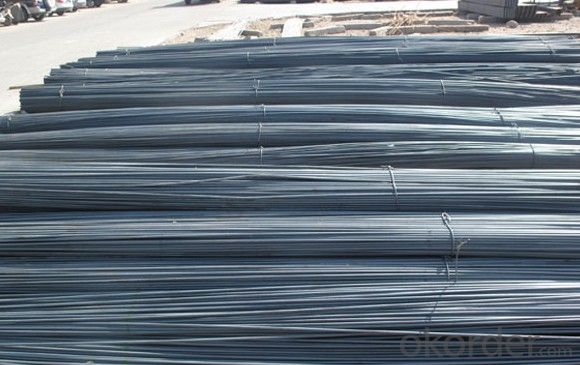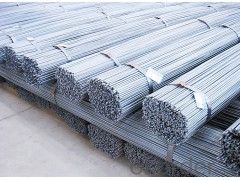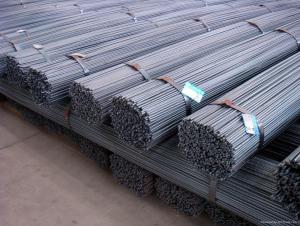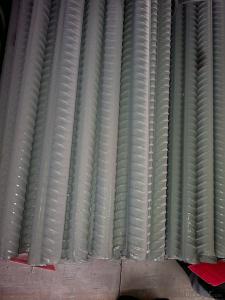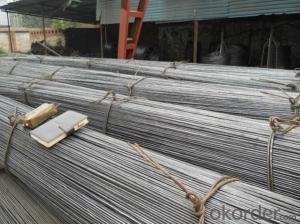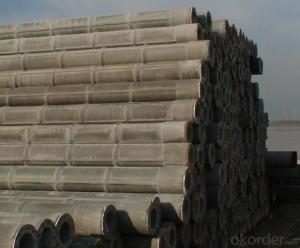Hot rolled deformed steel bar for construction
- Loading Port:
- Tianjin
- Payment Terms:
- TT or LC
- Min Order Qty:
- 25 m.t.
- Supply Capability:
- 100000 m.t./month
OKorder Service Pledge
OKorder Financial Service
You Might Also Like
Product Description:
OKorder is offering hot rolled deformed steel bar for construction at great prices with worldwide shipping. Our supplier is a world-class manufacturer of steel, with our products utilized the world over. OKorder annually supplies products to European, North American and Asian markets. We provide quotations within 24 hours of receiving an inquiry and guarantee competitive prices.
Product Applications:
Hot rolled deformed steel bar for construction are ideal for structural applications and are widely used in the construction of buildings and bridges, and the manufacturing, petrochemical, and transportation industries.
Product Advantages:
OKorder's deformed steel bar are durable, strong, and resist corrosion.
Main Product Features:
· Premium quality
· Prompt delivery & seaworthy packing (30 days after receiving deposit)
· Corrosion resistance
· Can be recycled and reused
· Mill test certification
· Professional Service
· Competitive pricing
Product Specifications:
Deformed bar is widely used in buildings, bridges, roads and other engineering construction. Big to highways, railways, bridges, culverts, tunnels, public facilities such as flood control, dam, small to housing construction, beam, column, wall and the foundation of the plate, deformed bar is an integral structure material. With the development of world economy and the vigorous development of infrastructure construction, real estate, the demand for deformed bar will be larger and larger..
Packaging & Delivery of HRB400 Deformed Steel Bar:
Packaging Detail: products are packed in bundle and then shipped by container or bulk vessel, deformed bar is usually naked strapping delivery, when storing, please pay attention to moisture proof. The performance of rust will produce adverse effect.
Each bundle weight: 2-3MT, or as required
Payment term: TT or L/C
Delivery Detail: within 45 days after received advanced payment or LC.
Label: to be specified by customer, generally, each bundle has 1-2 labels
Trade terms: FOB, CFR, CIF
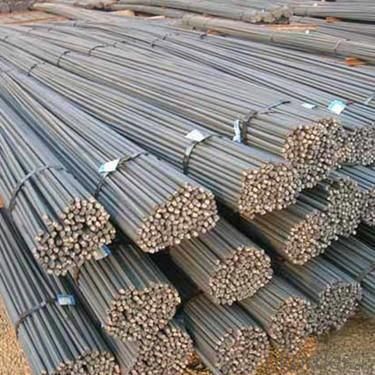
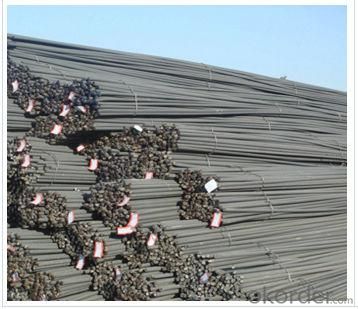
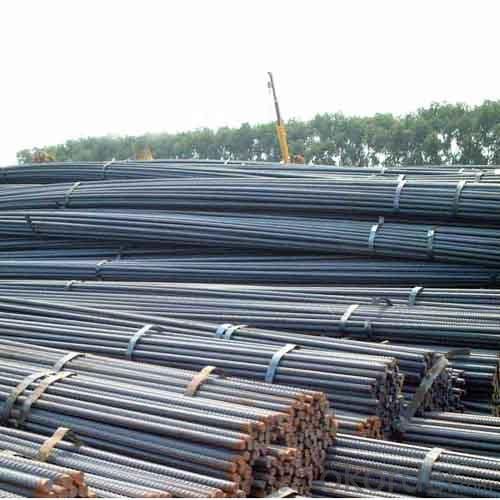
FAQ:
Q1: How do we guarantee the quality of our products?
A1: We have established an advanced quality management system which conducts strict quality tests at every step, from raw materials to the final product. At the same time, we provide extensive follow-up service assurances as required.
Q2: Can stainless steel rust?
A2: Stainless does not "rust" as you think of regular steel rusting with a red oxide on the surface that flakes off. If you see red rust it is probably due to some iron particles that have contaminated the surface of the stainless steel and it is these iron particles that are rusting. Look at the source of the rusting and see if you can remove it from the surface.
- Q: What is the role of steel rebars in roof slab construction?
- Steel rebars are commonly used in roof slab construction to provide reinforcement and strength to the concrete. They help to distribute the load evenly across the slab, making it more resistant to bending and cracking. The rebars also help to prevent the concrete from expanding or contracting due to temperature changes, ensuring the stability and durability of the roof slab.
- Q: What is the effect of fatigue on steel rebars?
- Fatigue can significantly weaken steel rebars, reducing their strength and structural integrity. It can lead to the development of cracks and fractures, making the rebars more susceptible to failure under applied loads. Therefore, fatigue is a critical factor that should be carefully considered in the design and maintenance of structures using steel rebars.
- Q: How do steel rebars contribute to the load-bearing capacity of structures?
- Steel rebars contribute to the load-bearing capacity of structures in several ways. Firstly, they enhance the tensile strength of the concrete. While concrete is strong in compression, it is relatively weak in tension. By adding steel rebars to the concrete, the tensile strength of the structure is significantly increased. This is crucial as structures are subjected to various loads, including dead loads (e.g. the weight of the structure itself), live loads (e.g. occupants, furniture), and environmental loads (e.g. wind, earthquakes). Secondly, steel rebars help to prevent cracking and improve the overall durability of the structure. Concrete has a tendency to shrink and crack due to temperature changes, moisture, and other factors. By placing steel rebars within the concrete, they act as reinforcement and help to distribute the load more uniformly, reducing the likelihood of cracking. This improves the structural integrity and longevity of the building. Furthermore, steel rebars also provide stability and support to the structure. They help to resist the lateral forces that can occur during high winds or seismic events. By anchoring the rebars into the foundation or other structural elements, they create a strong connection that can withstand these lateral loads and prevent the structure from collapsing or being damaged. In summary, steel rebars play a crucial role in enhancing the load-bearing capacity of structures by improving the tensile strength of the concrete, preventing cracking, and providing stability and support. Their integration into the structural design ensures the safety, durability, and long-term functionality of buildings and other infrastructure.
- Q: What is the weight of steel rebars per meter or foot?
- The weight of steel rebars per meter or foot can vary based on the size and type of rebar utilized. Standard steel rebars are typically accessible in different diameters, ranging from 6mm to 50mm. By multiplying the cross-sectional area of the rebar (measured in square meters or square feet) by the density of steel (approximately 7850 kilograms per cubic meter or 0.2836 pounds per cubic inch), one can ascertain the weight per meter or foot. To provide an example, let's examine a standard rebar with a diameter of 10mm. The cross-sectional area can be determined using the formula for the area of a circle (πr²), where r represents the radius of the rebar (5mm in this case). Assuming the unit of measurement is a meter, the cross-sectional area would equal π(0.01m)² = 0.000314 square meters. By multiplying this value by the density of steel, we arrive at 0.000314m² * 7850kg/m³ = 2.464 kilograms per meter. Similarly, if we were to calculate the weight in pounds per foot, we would convert the density of steel to pounds per cubic foot (approximately 490 pounds per cubic foot) and multiply the cross-sectional area by this figure. It is important to note that weight may slightly vary depending on the specific steel grade employed. Therefore, it is advisable to consult the manufacturer's specifications or a reliable reference for precise weight calculations.
- Q: How are steel rebars protected against chemical attacks?
- Corrosion protection is a process that shields steel rebars from chemical attacks. Various techniques and materials are utilized to prevent corrosive substances from harming the rebar. One method commonly employed is the application of protective coatings. These coatings, such as epoxy or zinc, create a barrier on the rebar's surface, obstructing corrosive substances from reaching the steel. Moreover, these coatings offer added protection against moisture and other environmental factors that contribute to corrosion. Corrosion inhibitors are another means of safeguarding the rebars. These chemicals can be added to the concrete mix or directly applied to the rebar. By forming a protective layer on the steel's surface, corrosion inhibitors impede the corrosion process. These inhibitors can be organic or inorganic compounds, targeting specific corrosion mechanisms. In certain cases, stainless steel rebars are used to protect against chemical attacks. Stainless steel possesses greater resistance to corrosion in comparison to regular steel rebars. The presence of chromium creates a passive layer on the steel's surface, guarding it against chemical reactions. Stainless steel rebars are frequently utilized in highly corrosive environments, such as marine structures or wastewater treatment plants. Regular maintenance and inspection play a crucial role in safeguarding steel rebars against chemical attacks. Any signs of damage or corrosion should be promptly addressed. Regular cleaning and removal of corrosive substances that accumulate on the rebars also aid in preventing chemical attacks. In conclusion, a combination of protective coatings, corrosion inhibitors, stainless steel rebars, and regular maintenance is essential for protecting steel rebars against chemical attacks. These measures prolong the rebars' lifespan and uphold the structural integrity of concrete structures.
- Q: How are steel rebars tested for quality assurance?
- Steel rebars are tested for quality assurance through various methods, including visual inspection, dimensional checks, and mechanical tests. Visual inspection ensures that the rebars are free from surface defects, such as cracks or rust. Dimensional checks verify if the rebars meet the required length, diameter, and weight specifications. Mechanical tests, such as tensile and bending tests, assess the rebars' strength and ductility, ensuring they meet the required standards. Additionally, rebars may undergo chemical composition analysis to ensure they contain the appropriate levels of elements like carbon, manganese, and sulfur. These quality assurance tests help ensure that steel rebars are of high quality and suitable for their intended construction applications.
- Q: Are steel rebars fire resistant?
- Yes, steel rebars are generally considered to be fire resistant. Steel is an incombustible material, meaning it does not burn or contribute to the spread of fire. In the case of fire, steel rebars can withstand high temperatures for an extended period without losing their structural integrity. This is due to the high melting point of steel, which is around 1370 degrees Celsius (2500 degrees Fahrenheit). Additionally, steel rebars are often encased in concrete during construction, providing an additional layer of protection against fire. However, it is worth noting that in extremely intense and prolonged fire conditions, steel can eventually weaken and lose its load-bearing capacity. Therefore, fire protection measures such as fire-resistant coatings or fireproofing materials are sometimes applied to further enhance the fire resistance of steel structures.
- Q: Are there any restrictions on the use of steel rebars in certain regions?
- Yes, there are certain restrictions on the use of steel rebars in certain regions. These restrictions can vary from region to region and are typically put in place to ensure the safety and integrity of structures. In some areas, building codes and regulations may dictate specific requirements for the use of steel rebars, such as the type, size, and placement of rebars. Additionally, there may be restrictions on the use of certain types of steel rebars, such as epoxy-coated rebars, due to environmental concerns. It is important for construction professionals to familiarize themselves with the local building codes and regulations to ensure compliance and promote the safety and durability of structures.
- Q: How are steel rebars classified based on their yield strength?
- Steel rebars can be classified based on their yield strength into different grades, such as Grade 40, Grade 60, and Grade 75. The yield strength indicates the maximum amount of stress a rebar can withstand before it starts to deform permanently. Higher grade rebars have higher yield strength, making them suitable for applications that require stronger reinforcement.
- Q: What is the process of removing rust from steel rebars?
- The process of removing rust from steel rebars typically involves several steps. First, the surface of the rebars is cleaned thoroughly using a wire brush or sandpaper to remove loose rust, dirt, and any other contaminants. After cleaning, a rust converter or inhibitor may be applied to neutralize any remaining rust and prevent further corrosion. Once the converter has dried, a primer specifically designed for metal surfaces is applied to provide a protective coating. Finally, a suitable paint or coating is applied to the rebars to ensure long-term protection against rust and corrosion.
Send your message to us
Hot rolled deformed steel bar for construction
- Loading Port:
- Tianjin
- Payment Terms:
- TT or LC
- Min Order Qty:
- 25 m.t.
- Supply Capability:
- 100000 m.t./month
OKorder Service Pledge
OKorder Financial Service
Similar products
Hot products
Hot Searches
Related keywords
